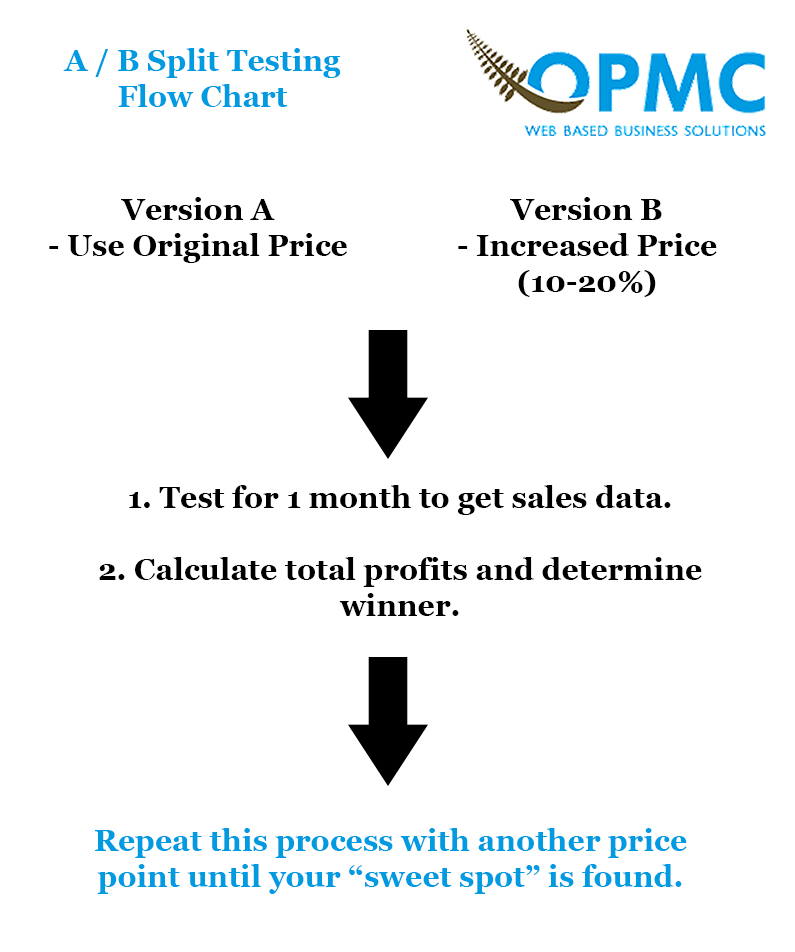With all the pricing strategies out there, what’s the best way to price your products online?
The price of a product has been named one of the most important factors when making a purchase decision by 60% of online shoppers worldwide.
61% of these consumers reported to doing price comparison online.
Today, price comparison easier than ever with Google’s improved search engine and websites that aggregate online store prices.
So the big question is, how do you price your products to remain competitive within the market, while still making maximum profit?
To begin with, the very first criteria is to price your products in a way that will make enough profit to cover your overhead expenses and then some (to pay yourself and also to reinvest and grow your business).
While there are various pricing strategies out there like Keystone pricing, Cost-based pricing and so forth, it is our opinion that the most important factor depends on whether you are manufacturing your own products or are retailing products online.
We will separate these two areas as the pricing strategies and the pricing method for each are significantly different.
1. How to price your own products
If you manufacture / create your own products, your USP (Unique Selling Proposition) and perceived value will affect how much you can sell your products for.
To give a simple example, Gucci Bags are sold often upwards of $3,000. Yet the cost of manufacturing this bag is nowhere close to this amount. So how can they get away with such an extreme markup?
The answer lies in Gucci’s USP and perceived value. Gucci has positioned their products in a way that their target market perceives the bag being “worth” $3,000 to them. It is a status symbol and lifestyle purchase – which Gucci has spent millions in marketing budget to achieve this position.
While this is an extreme example, we can still take away some key lessons.
The first is that perceived value does not equal actual value. As long as your consumers believe that they are getting the right amount of perceived value, they will go ahead with the purchase.
You can apply this principle to your own products by positioning them as a “premium” product when compared to competitors. But you also need to make sure that your product is actually superior to competitors’ products on the market.
For example, it may solve a specific pain point for your target market, in a way that no other product does. Or perhaps it solves this problem better than competitors’ products. Once you know your USP, you should push this angle as much as possible in your advertising and product pages.
Additionally, keep in mind your target market’s disposable income when pricing your premium products, as they can only spend as much as they can afford.
But how can you know your target market’s disposable income? Here’s a few ways to get this information:
- Available to US Markets on the Facebook Ads platform
- If you know your market’s demographics, there may be statistical studies published by either the government or agencies with income data.
- Run your own survey – this can be done easily for free via Google Forms.
- Talk directly to your customers and ask some non-invasive questions (e.g. what kind of job they have and how long they have been working there can give you some indication).
But what about specific % mark ups? Is there a systematic way to correctly price my products?
Unfortunately there’s no single mark up that will work for every product and every industry.
However there is a systematic way to find out the sweet spot for your products.
Assuming you are already selling products at a certain price, we recommend using A/B split testing to find the perfect price point for your products.
A/B Split Testing
This is where you use software to create two “versions” of your product page, one with the original price and one with the increased price.
So if 100 new visitors come to your online store, the software will automatically show 50 of these visitors “Version A” (with the original price) and the other 50 visitors, “Version B” (with the increased price).
Once you have approximately a month’s worth of sales data, you will be able to make a clear decision on the “winner” by calculating how much total profit you were able to make off each version.
For example, even if Version B sold less products, you may end up with more total profit due to the increased margins. This is why it is important to calculate the total costs and total profits of each version.
It’s also critical to make sure no other variables are changed during the “testing” period. So avoid adding new product images, videos, descriptions etc. as this will invalidate the data (since we cannot be 100% sure that it was the change in price that caused the variations).
If “Version B” was the winner of this test and produced the highest amount of profit, run another split test with an even higher price versus “Version B.” Repeat this method until you find the sweet spot for your product pricing.
We recommend making price increments of 10-20% for these tests. If your margin allows, you can also try testing lower price points to see if the volume will make up for more total profits.
Here are some A/B Split Testing Software Recommendations:
- Optimizely – you can also find out more about A/B testing here.
- Neilio A/B Testing Plugin for WooCommerce users.
2. How to price your products as a re-seller
As a re-seller, online selling can be a challenge because it is easy for the customer to do price comparisons online.
It may also be the case that the products you sell are also sold by many other stores (which can be especially difficult if you are competing against giants like Amazon, NewEgg etc.).
So eventually, much of online pricing will comedown to distribution and how cheaply you can source your retail products from the manufacturers / wholesalers.
However, there are a few ways to charge more than your competitors for identical products, but still get sales – mainly through differentiation.
For example, Mobil managed to get a huge advantage over their competitors by providing small pamphlets guides that told people how to get the most fuel mileage out of their cars. And this was for petrol industry, one of the most competitive commodity products. In this case, Mobil provided valuable information to their customers, which got them a significant competitive edge.
Use Product Premiums
If you can provide product premiums that have a high perceived value to the consumer (like the Mobil pamphlets), you will be able to charge more than your competitors for the same products and still make sales.
For example, if you are selling Laptops online, you could give away a laptop carry bag for free (or at a heavy discount) or other peripherals.
Here are some ideas for product premiums and ways to differentiate your store:
- Information – if you have some special knowledge (or are willing to research to gather this information), then adding a free book or video can be a valuable premium for your customers. For example, if you are selling fishing gear online, giving out eBooks on the best spots to go fishing etc. can be an effective premium. Even if you don’t have specific information, you could include other people’s books as a premium instead.
- You can also provide this information through an email newsletter, sending out regular emails or posting content on your website.
- Free Shipping Offers
- Add-on products – an easy way to get some ideas for add-on products is to use Amazon’s “Frequently bought together” section. Simply search for your product categories and see what Amazon recommends.
- Building a community / brand around your website – if you’re in it for the long-term, building a community (or “tribe”) around your store can also be a way to differentiate your store. For example, if you sold surfboards and other beach gear, you could brand your community around the beach lifestyle.
- However, this is a long and slow process so you’ll need to make sure that you have some consistent profitability and enough cash flow to invest your resources into building your own “tribe.”
The key take away is to provide premiums that are valuable to the customer.
For online retailers, much of your pricing is going to depend on your competitors’ / market pricing. If you have superior distribution or are able to get your products in cheaper than others, then use this to price your products lower than your competitors.
Otherwise, use the product premium ideas above as well as the A/B Split Testing method mentioned in the first section to find the optimal pricing for your products.
At the end of the day, make sure to price your products at a point where you are making enough profit to keep your business going.
We hope you found this article useful – if you need any assistance with the topics in this blog post, please don’t hesitate to contact us.



